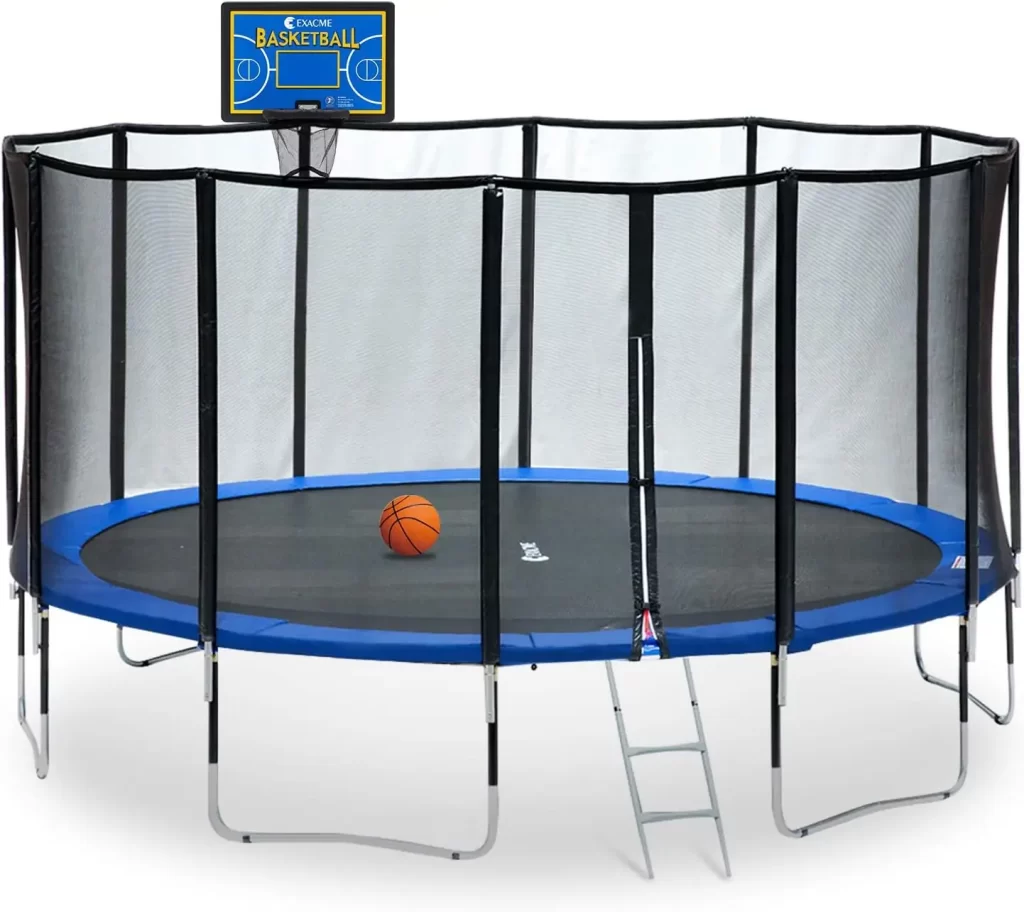When it comes to trampolines, many questions pop up, and one of the most frequently asked is, “How much does a trampoline weigh in pounds?” Whether you’re considering purchasing a trampoline, relocating one, or just curious about the science behind these bouncy marvels, understanding their weight is crucial. In this guide, we’ll dive deep into the world of trampolines, exploring various factors affecting their weight, the standard weight ranges, and specific considerations for different types and sizes.
The Basics: How Much Does a Trampoline Weigh?
Let’s start with the primary question: how much does a trampoline weigh in pounds? Trampoline weights can vary significantly based on factors such as size, design, materials, and intended use. On average, a standard-sized trampoline can weigh anywhere from 50 to 300 pounds. Larger models may exceed this range.
What Factors Affect Trampoline Weight?
The weight of a trampoline depends on various factors:
- Size: As trampolines come in different sizes, it’s no surprise that the larger ones tend to be heavier. A 15-foot trampoline, for example, will weigh more than an 8-foot trampoline.
- Materials: The materials used in the frame, springs, and mat affect the overall weight. Sturdier materials can increase the weight but also improve durability.
- Design: Trampolines may have unique designs, like enclosures or safety nets, which add weight.
- Intended Use: Trampolines designed for heavy usage, like those in commercial settings, are usually heavier to withstand wear and tear.
Is There a Standard Weight for Trampolines?
There isn’t a strict standard weight for trampolines, but as mentioned earlier, they generally fall within the 100 to 300 pounds range. Manufacturers provide specific weight details for each model. It’s essential to consider these details, especially if you’re planning to place the trampoline on a specific surface, like a wooden deck.
How to Determine Weight Capacity
The weight capacity of a trampoline is a critical factor, in ensuring safety during use. To determine this, consider:
- The weight of the heaviest intended users.
- The weight of any accessories or additional weight that might be on the trampoline at once.
- Ensure that the weight capacity exceeds these combined weights.
Lightweight Trampoline Options
If you’re looking for a trampoline that’s easy to move and transport, you’re in luck. Some trampolines are designed with portability in mind and are considerably lighter. While the weight may vary, these trampolines can weigh as little as 80 pounds or less.
How Much Does a Trampoline Weigh in Pounds?
While there isn’t a strict standard weight for trampolines, most fall within the range of 80 to 250 pounds for standard-sized models. Larger trampolines, especially those used in commercial or professional settings, can exceed this range.
Here are some approximate weight limits based on different trampoline sizes:
- Small Trampolines (around 8 feet in diameter): These trampolines typically weigh between 50 to 200 pounds.
- Medium-Sized Trampolines (10-12 feet in diameter): The weight range for these trampolines is typically between 150 to 250 pounds.
- Large Trampolines (14-15 feet in diameter): These sizable trampolines can weigh between 250 to 350 pounds or more.
Weight Limits for Different Trampoline Sizes
Trampoline weight limits depend on the size and design. Here’s a general idea:
- Small trampolines (around 8 feet): 200-250 pounds.
- Medium-sized trampolines (10-12 feet): 250-350 pounds.
- Large trampolines (14-15 feet): 350-450 pounds.
Remember, these are approximate guidelines, and you should always check the manufacturer’s specifications for the specific model you’re interested in.
Do Heavier Trampolines Provide Better Stability?
The weight of a trampoline can indeed contribute to its stability. Heavier trampolines tend to be more stable, especially in windy conditions. If you live in an area with frequent strong winds, a heavier trampoline might be a better choice.
Tips for Safely Moving and Storing a Heavy Trampoline
Moving and storing a heavy trampoline can be a daunting task. Here are some tips:
- Disassemble the trampoline to make it easier to move.
- Use a dolly or cart to transport the parts.
- Store the trampoline in a dry, cool place to prevent rust and damage.
Specific Weight Considerations for In-Ground Trampolines
In-ground trampolines are designed to be partially or fully buried in the ground. Their weight can vary but often ranges from 200 to 400 pounds. Be sure to check the manufacturer’s recommendations for installation and any specific weight guidelines.
Comparing Trampoline Weights: Brands and Models
The weight of trampolines can vary significantly between brands and models. Different manufacturers use various materials and designs, leading to differences in weight. When comparing trampolines, always refer to the product specifications provided by the manufacturer for precise information.
Expert Data Table
Here’s a table comparing the weights of different trampoline sizes and some examples from popular brands:
| Trampoline Size | Weight Range (in pounds) | Example Models and Brands |
|---|---|---|
| How much does an 8ft trampoline weigh? | 50-80 | Skywalker, Zupapa |
| How much does a 10-foot trampoline weigh? | 70-110 | JumpKing, Upper Bounce |
| How much does a 12-foot trampoline weigh? | 100-150 | AlleyOop, Giantex |
| How much does a 15-foot trampoline weigh? | 150-250 | Springfree, Vuly Thunder |
Please note that these are approximate weight ranges, and the actual weight may vary based on specific features and materials used by each manufacturer.
In conclusion, the weight of a trampoline is a crucial consideration, as it affects portability, stability, and suitability for different settings. By understanding the factors that influence trampoline weight and the weight limits for various sizes, you can make an informed decision when choosing the right trampoline for your needs.
For more information and safety guidelines, you can refer to authoritative sources like the Consumer Product Safety Commission (CPSC) and the American Academy of Pediatrics.




